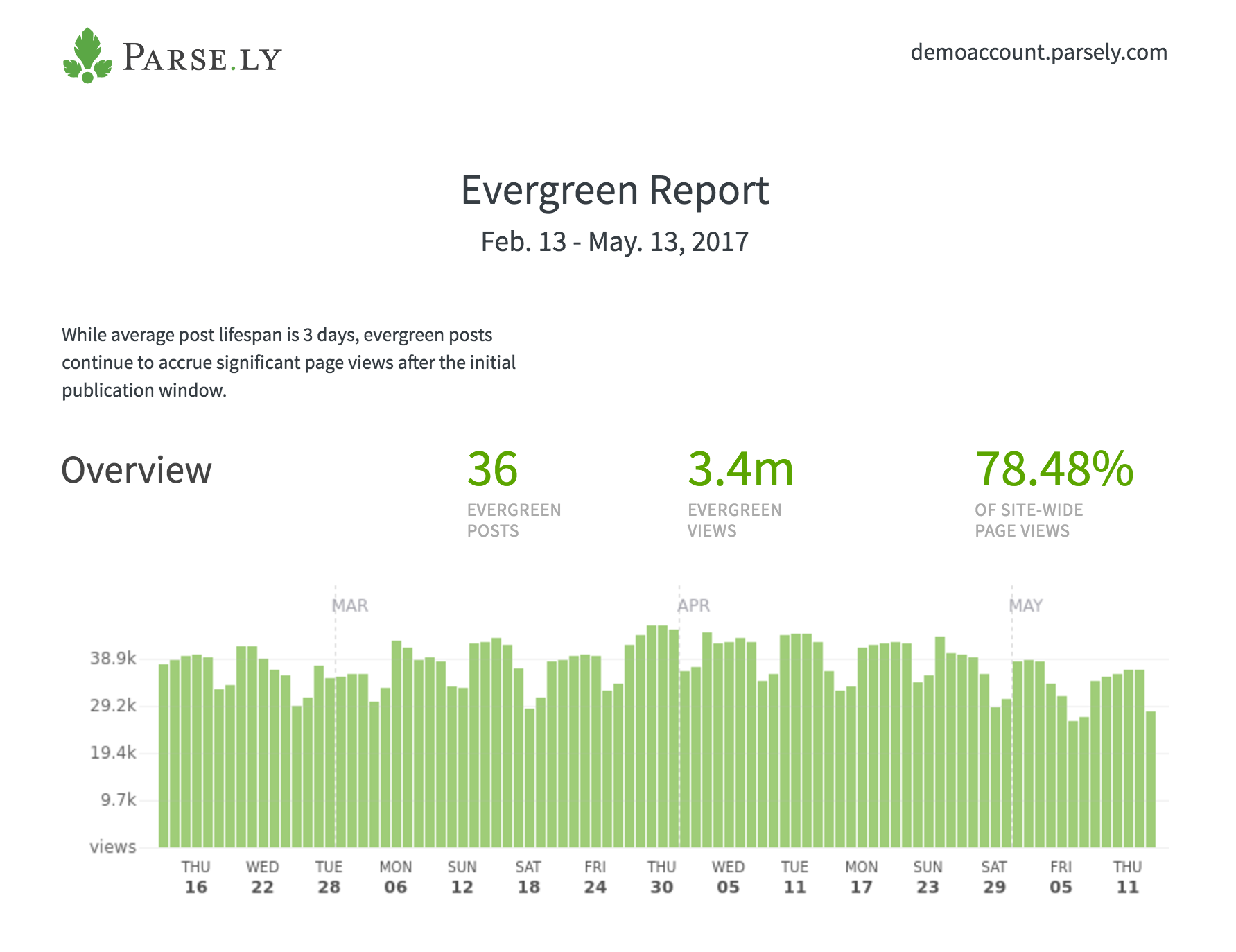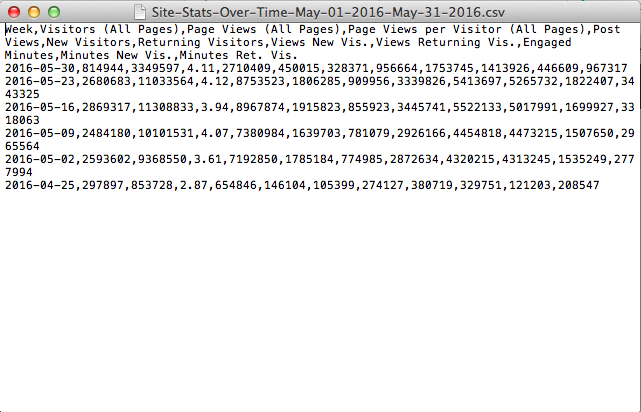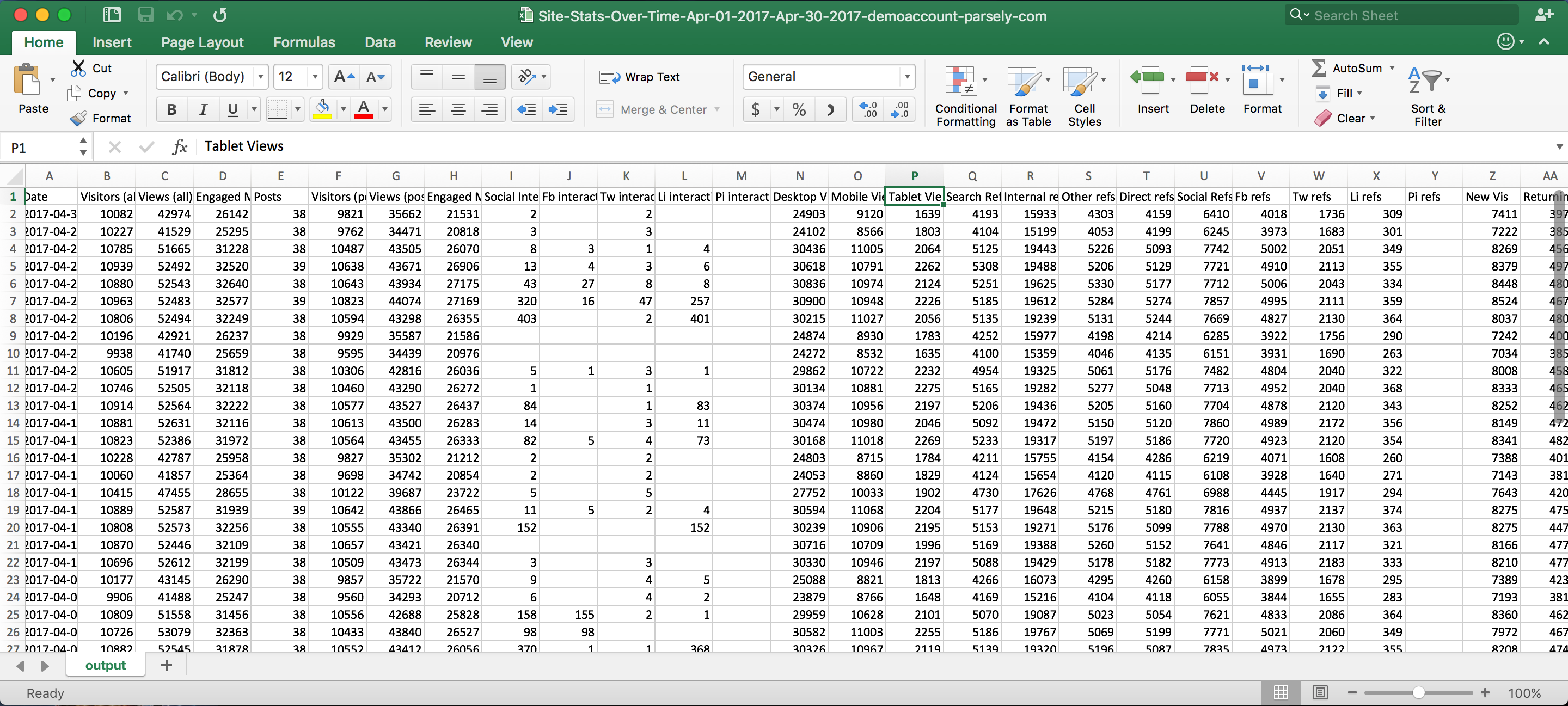Reports: What’s the difference between HTML, CSV and XLSX?
Parse.ly’s reporting suite allows you to export customized data in the exact format you want. For a full tutorial on exporting data, read our overview.
HTML Report
HTML reports create a unique webpage where your data will live using HTML (HyperText Markup Language), a coding language. This essentially means a report will be generated and open in a new tab within your browser. The webpage is often interactive; the Details Report, for example, allows you to click through on top posts and authors to see more detailed stats.

CSV Export
CSV stands for Comma Separated Values, meaning data that might normally be displayed in a table or Excel sheet is removed and re-written as plain text. Here’s an example of a CSV for the same data seen above:

CSV files are commonly used for data exchange between platforms, making the data “raw” again so it can be processed by different applications. This is the most flexible data format.
XLSX Export
XLSX is the file extension for a Microsoft Excel Spreadsheet. Exporting this way will create a spreadsheet that is editable and viewable in Excel. This makes the data easy to re-group, combine, and re-format.
If you don’t have Microsoft Office installed on your computer, the data will still download in a spreadsheet like the one below.

Last updated: August 16, 2023